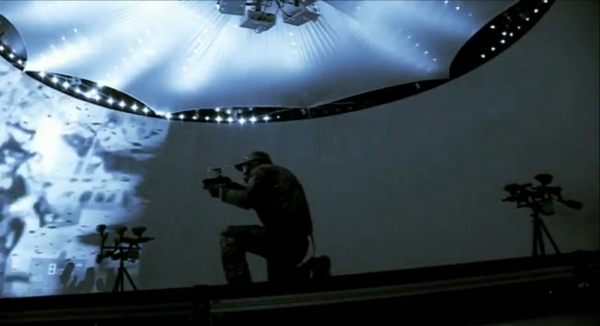 Battlefield 3 is set to be one of the biggest games of the 2011 season thanks to its impressively life-like graphics and sound-design. I can tell you from experience, the Battlefield games have had some of the best sound design in the industry. Hooked up to the appropriate audio setup, you will feel like you’ve got your feet on the ground in the midst of an actual battle. Terrifying, and incredibly fun, but virtual reality it is not.
Battlefield 3 is set to be one of the biggest games of the 2011 season thanks to its impressively life-like graphics and sound-design. I can tell you from experience, the Battlefield games have had some of the best sound design in the industry. Hooked up to the appropriate audio setup, you will feel like you’ve got your feet on the ground in the midst of an actual battle. Terrifying, and incredibly fun, but virtual reality it is not.
Remember when I told you the other day how awesome Battlefield 3 would be if it were hooked up with a VR rig? Well it looks like that wish is now reality.
Thanks to folks from The Gadget Show, Battlefield 3 is about to become a wickedly immersive experience (for those lucky enough to play it in the rig they build, that is). They created a virtual reality Battlefield 3 simulator which combines almost all of the technologies we’ve been talking about here on Road to VR and even added some interesting new components into the mix. Check out their teaser trailer:
[youtube=http://www.youtube.com/watch?v=nQR49JGySTM]
The teaser lists the following technologies, all working together to create a lifelike experience:
- Wireless Weapon
- Omni-directional Treadmill
- Motion Tracking
- Surround Sound
- Paintball Guns Ambient Lighting
- Five HD Projectors
- 360 Degree Dome
- (and of course) Battlefield 3
I don’t expect to see this rig commercialized at any point given the proprietary nature of all of the systems, but a mass produced version of this setup could readily be sold to mega-arcades and other extreme-entertainment venues.
If you’re in Britain and have a chance to watch the show, please drop some comments here to let us know how the Battlefield 3 virtual reality simulator performs!







Pingback: Battlefield 3 Virtual Reality Simulator Episode from The Gadget Show Now Available Online! [video] « Road to Virtual Reality()
Pingback: Victor Boucher – Future in Gaming « dadimadesign()